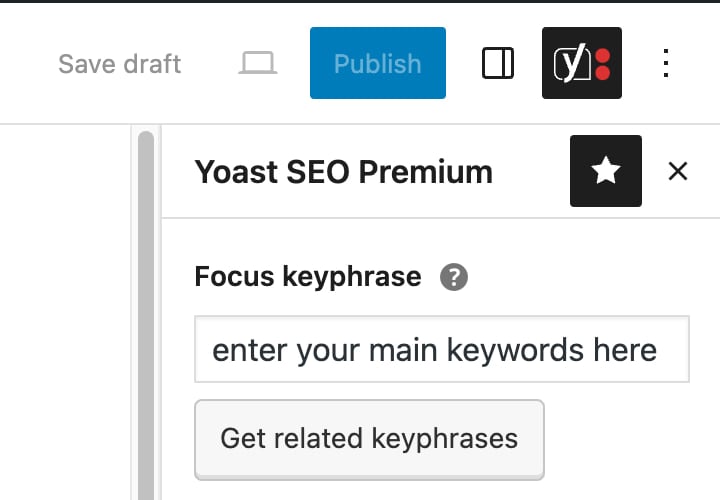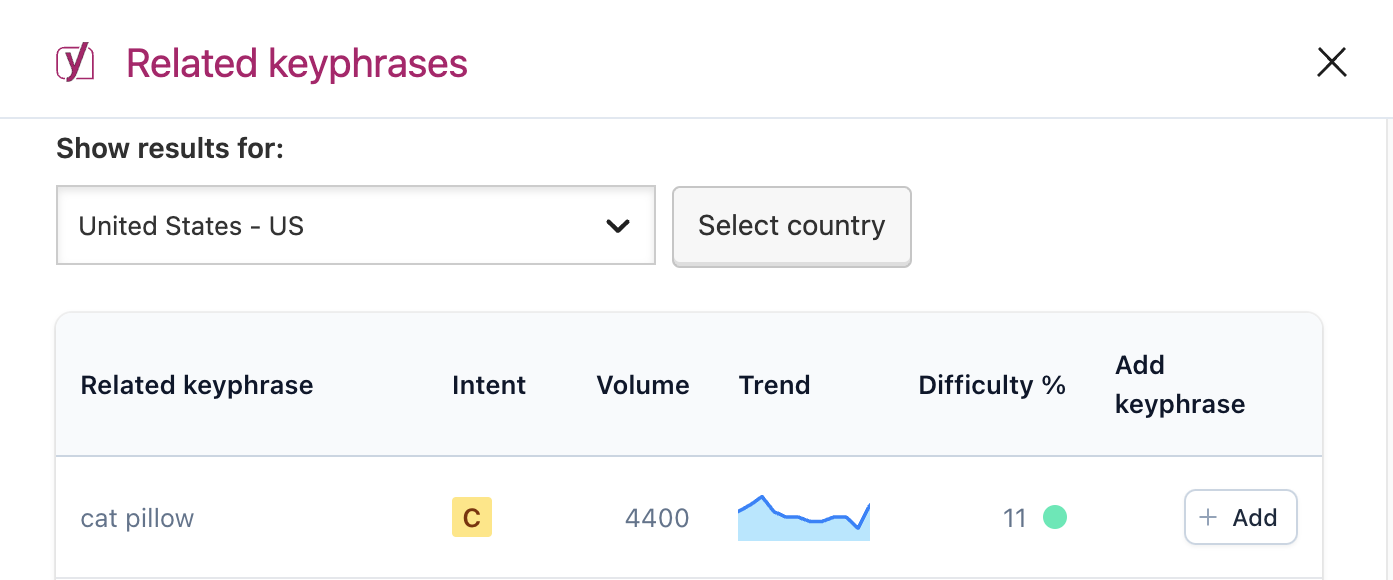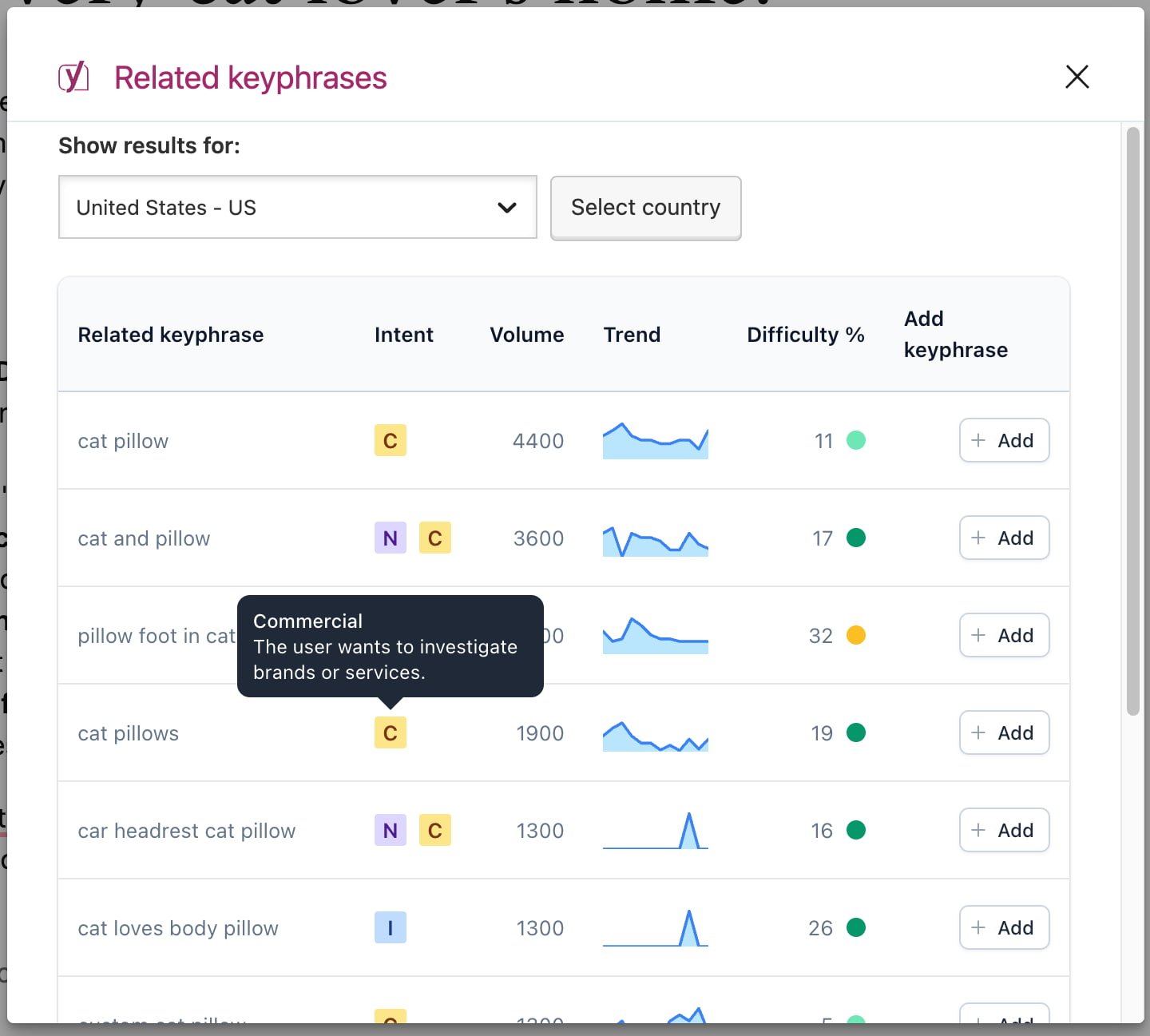Yoast SEO and Semrush integration offers powerful tools for various SEO areas, like finding keywords, planning, implementation, and analysis.
Benefits for WordPress users
Benefits for WordPress users include enhanced keyword research. You can access Semrush’s vast database from the WordPress editor to find and apply effective related keywords. Get real-time SEO suggestions to refine your content as you write using current SEO data. This integration simplifies your work. You don’t have to jump between tools and platforms as much, so you can concentrate on writing content that ranks.
Advantages for Shopify store owners
Advantages for Shopify store owners include access to ecommerce keywords. These insights help drive targeted traffic to your store. Conduct SEO health checks to analyze and optimize product descriptions and meta tags, ensuring full SEO compliance. Integrating targeted keywords into your Shopify store’s content enhances visibility and boosts conversion potential.
Setting up the integration is simple for both WordPress and Shopify users. Connect your Semrush account to Yoast through the plugin or app interface. This lets you access keyword analytics and SEO advice right in your dashboard. If you haven’t installed Yoast SEO yet, start there. We offer a guide to help you with the setup.
Finding related keyphrases
Related keyphrases, or related keywords, are terms linked to your main keyword. They boost your content’s relevance, which helps search engines grasp your page’s topic and details. Adding related keyphrases makes your content more comprehensive and informative. This enhances its visibility in search results, as search engines favor pages that cover a topic thoroughly.
Using related keyphrases also avoids keyword stuffing, leading to more natural, reader-friendly text. This approach attracts more organic traffic and helps your content rank for a wider range of search queries.
Getting started with related keyphrases
Navigate to the post or page you wish to optimize in the content editor. To access the Semrush tool, locate the Focus keyphrase section and enter your main focus keyphrase. Then, click the Get related keyphrases button, and a pop-up will appear.

Semrush presents related keyphrases in the pop-up, including search volume, search intent, difficulty, and trends. For more detailed insights or to explore further, use the Keyword Magic Tool in Semrush. Alternatively, use your preferred keyword research tools to gather additional insights.
Search volume and difficulty data help understand popularity
Semrush’s search volume data shows how often users search for a specific keyword or keyphrase each month. This metric highlights the keyword’s popularity and demand. High search volume suggests strong interest, while low volume indicates fewer searches. You can use search volume data to identify trends over time, spotting seasonal or emerging keywords. Analyzing these volumes helps you gauge your content’s potential reach and find high-demand keywords to target.
However, high search volumes often mean high competition. Balancing search volume with keyword difficulty is key. Keyword Difficulty measures how hard it is to rank in the top ten for a keyword, ranging from 0% to 100%. Lower percentages mean less competition, making it easier to rank, while higher percentages indicate tough competition requiring significant effort.

Semrush and search intent
Semrush provides tools to integrate search intent into your keyword research. Understanding search intent allows you to tailor content to user needs, improving rankings and attracting relevant traffic.
Semrush offers a search intent metric for each keyword, helping you identify whether a keyword is navigational, informational, commercial, or transactional. This insight lets you align your content with user searches. For instance, commercial intent keywords might lead to content focused on comparisons or reviews, while transactional keywords benefit from clear calls-to-action.
You can explore keywords based on search intent using Yoast SEO’s Related Keyphrases tool. This helps you target the most relevant keywords for your content goals. You might focus on informational keywords for a blog aimed at new audiences. For an ecommerce site, combining commercial and transactional keywords can attract potential buyers to your product pages.

Integrating related keyphrases into your content
Select the most relevant and beneficial related keyphrases from the list provided by Semrush. Focus on search volume, difficulty, and how they relate to your main topic. You can add up to four additional related keyphrases to your content. Yoast SEO will factor in these related keyphrases when analyzing your content and offering suggestions for improvement.
Incorporate related keyphrases naturally
After selecting the best keywords, add them naturally to your content. Avoid keyword stuffing. Use related keyphrases in sections like subheadings, bullet points, and within the body text. Ensure they complement the primary keyphrase and enrich the content’s context.
Include related keyphrases in meta descriptions and image alt texts to expand your content’s relevance. Yoast SEO will give feedback on their integration and suggest improvements.
Analyze and optimize
Once you’ve integrated the related keyphrases, check the analysis from Yoast SEO. The plugin will offer tips for further optimization. Focus on readability and overall keyword usage. Adjust your content based on Yoast SEO’s suggestions to ensure it’s optimized for primary and related keyphrases.
Better keywords with Semrush and Yoast SEO
The Yoast SEO and Semrush integration is a great tool for marketers, content creators, and ecommerce professionals. This partnership helps improve your SEO on WordPress and Shopify by combining data-driven keyword research with practical SEO implementation.
Enhance your SEO by connecting Yoast SEO and Semrush today. Experience the benefits of integrated SEO tools right at your fingertips. Have fun exploring the integration!
